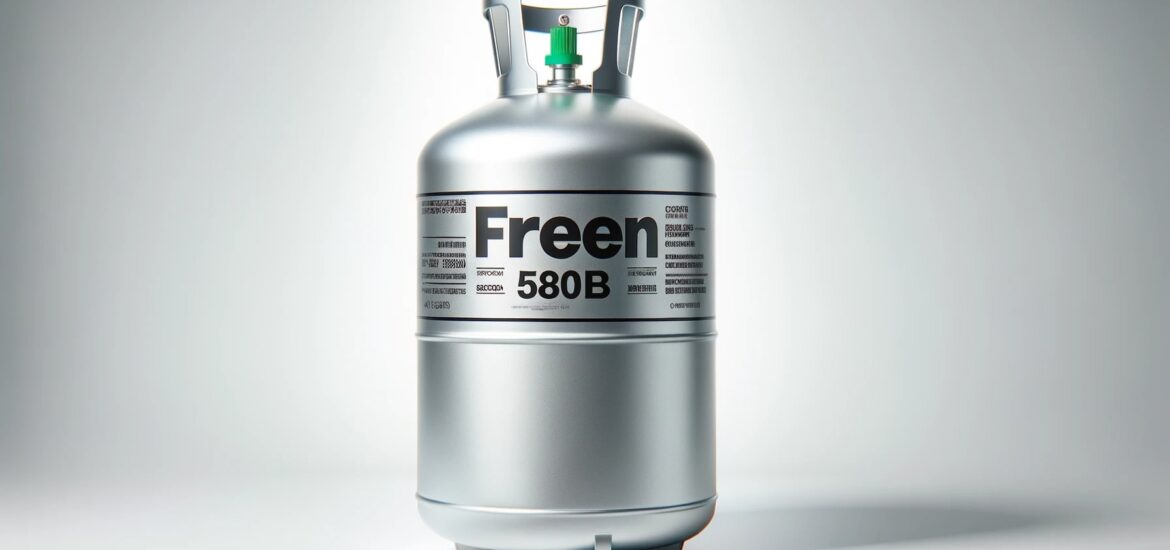If you’re dealing with refrigeration systems that require ultra-low temperatures, you’ve likely come across Freon 580b, also known as R-508B or Freon 95. This guide is designed to provide you with complete information about what Freon 580b is, how it is used, and the safety precautions you need to know.

Table of Contents
What Is Freon 580b (R-508B)?
Freon 580b, also known by its technical name R-508B or its commercial name Freon 95, is a blend of two different refrigerants: R-23 and R-116. This specific combination makes it a highly effective refrigerant for ultra-low temperature applications.
It differs from household refrigerants like R-134a and R-410A, which are not designed to achieve such low temperatures.
You can read this article: HFC134a Refrigerant: Your Ultimate Guide to learn more about the R-134a refrigerant.
The pressure characteristics of Freon 580b are also unique. It operates under higher pressures compared to many other refrigerants. Therefore, the components of the refrigeration system, such as the compressor, evaporator, and condenser, need to be rated to handle these higher pressures safely.
Being a blend, Freon 580b can separate into its constituent parts under certain conditions. For that reason, it must be charged into the refrigeration system in liquid form to maintain its effectiveness. Always consult the manufacturer’s guidelines when working with this refrigerant.
Applications of Freon 580b
Freon 580b has specialized applications that require significantly lower temperatures than most standard refrigerants can provide. Here are the primary areas where it’s utilized:
Medical Freezers: Hospitals and research labs use Freon 580b to achieve the ultra-low temperatures needed for storing plasma, vaccines, and biological samples.
Scientific Research: Research facilities that need to maintain temperatures as low as -80°C to -90°C will often rely on Freon 580b.
Industrial Processes: Certain manufacturing processes like freeze-drying or quick freezing use this refrigerant to rapidly bring down the temperature.
It’s essential to note that Freon 580b is not suitable for residential applications due to its specific temperature and pressure requirements.
Safety Precautions
Working with Freon 580b involves several safety precautions that are mandatory for your well-being and that of your environment:
Protective Gear: Safety gloves and goggles like this Hyper Tough Anti-Fog Safety Glasses from Walmart are a must to protect your skin and eyes from direct contact with the refrigerant, which can cause irritation or injury.
Ventilation: Good ventilation is necessary as the refrigerant can displace oxygen, leading to asphyxiation in worst-case scenarios.
Authorized Handling: Due to the high risks associated with its handling, only certified HVAC professionals are legally permitted to purchase and manage Freon 580b. They are trained in proper charging and recovery methods.
Environmental Concerns
R-508B has a high Global Warming Potential (GWP), which makes it a significant contributor to climate change if released into the atmosphere. As such, there are stringent regulations around its disposal:
Proper Disposal: Used R-508B should be collected and sent to recycling facilities that can process it without releasing it into the atmosphere.
Legal Restrictions: Releasing R-508B into the atmosphere is against the law in many countries and can result in severe penalties.
It’s crucial to adhere to all local and international laws and guidelines when disposing of R-508B to minimize its environmental impact.
